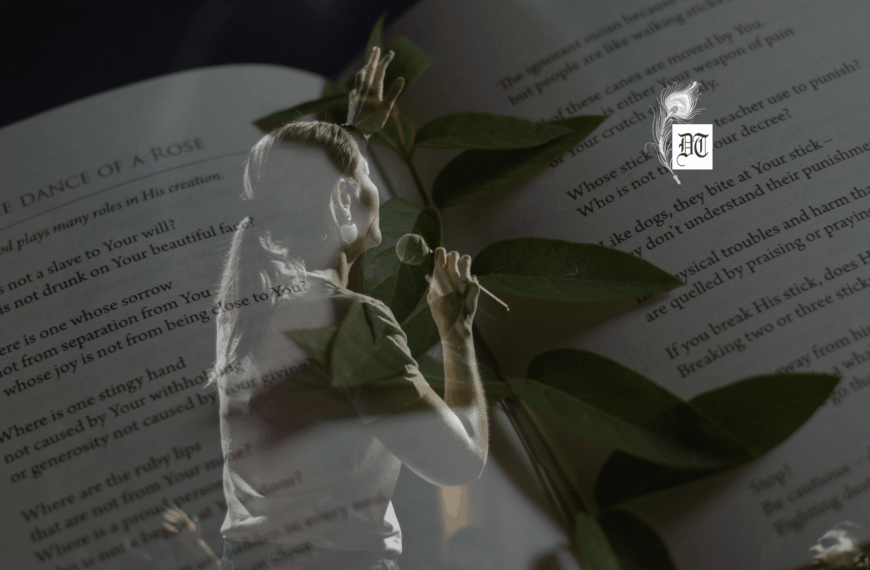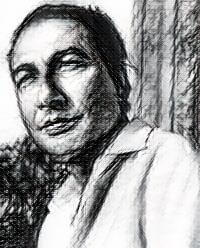Greed for power and the politics surrounding it has been ugly, historically. The Colonial Masters fanned the differences and practiced ‘divide and rule India policy’. Bhisham Sahni, in Tamas, shows how these two identities are made hostile to each other by the political ambition of some power-loving people, the Colonial Masters’ ‘divide and rule India policy’ and Hindu brands of religious fundamentalism. These disruptive forces bring the two identities at war and thus create a crisis of identity of both Hindus and Muslims in pre-partitioned India. Here’s a critique by Basudeb, in the weekly column, exclusively for Different Truths.
Tamas presupposes at the very beginning the existence of the two separate identities in pre-partition India – one of Hindus and the other of Muslims. Bhisham Sahni shows how these two identities are made hostile to each other by the political ambition of some power-loving people, the Colonial Masters’ ‘divide and rule India policy’ and Hindu brands of religious fundamentalism. These disruptive forces bring the two identities at war and thus create crisis of identity of both Hindus and Muslims in pre-partitioned India.
Racially Hindus and Muslims in India are of the same stock. The difference between Hindus and Muslims is only of religion. If we accept the hypothesis that Hindus first come to the Indus from Central Asia and Muslims from the same region during a much later period, we will find that they are of same anthropological origin. Indian Muslims are mostly converts to Islam. Muslim rulers of Central Asia invade India, establish their rule here, and then convert Hindus into Islam by force. Moreover, in the course of centuries, they all become Indians. By Indian culture, include in it the contributions of both Hindus and Muslims. Indian culture is a composite one. It is a synthesis of various cultures and traditions. The difference is not the difference in art, music, architecture, aesthetics, food-habits, and so on.
A careful examination of the conversation between Richard the District Deputy Commissioner and his wife Lisa in Tamas shows that both Hindus and Muslims are of the same racial stock. Liza who comes from England fails to distinguish between a Hindu and a Muslim. She asks her husband:
‘I still cannot make out a Hindu from a Muslim. Can you Richard? Can you immediately know whether a person is a Hindu or a Muslim?’
‘Yes, I can.’
‘What about our cook? Is he Hindu or Muslim?’
‘He is a Muslim’.
‘How do you know?’
‘From his name, the cut of his beard; he offers Namaz…. It is quite simple Liza. The names of Muslim end with such suffixes as Ali, Din, Ahmed, whereas the names of Hindus end with Lal, Chand, or Ram. If the name is Roshan Lal, the man is Hindu, but if it is Roshan Din, he is Muslim. If it is Iqbal Chand, he is Hindu, if Iqbal Ahmed, he is Muslim.’ (Tamas, pp. 208-09)
It is not possible for Liza to identify a person either as a Hindu or as a Muslim. Their looks are identical; their features are the same. Another piece of conversation between Richard and Liza establishes that both Hindus and Muslims are of the same racial stock:
‘The inhabitants of this area too have been living here since times immemorial. Have you noticed their features? A broad forehead, brownish tint in the colour of their eyes. They all belong to the same racial stock.’
‘How can they be of the same racial stock, Richard, when invaders from all over, as you say, have been here?’…
‘The first wave of migrants who came from Central Asia three or four thousand years ago and the bands of invaders, who came two thousand years or so later, both belonged to the same racial stock. The former were known as Aryans and the latter Muslims. But both had the same roots.’
‘The people here too must know all this.’
‘These people know only what we tell them. . . . Most people have no knowledge of their history. They only live.’ (Tamas. p. 207.)
The crisis of identity that exists between the two communities is of religious identities. Political leaders like Jinnah or Veer Savarkar or Lala Lajpat Rai and colonial rulers in India manipulate this religious identity for their personal and political gain. Mohammad Ali Jinnah’s two-nation theory addressed at the Muslim League conference at Lahore, in 1940, and Hindu Mahasabha’s clarion call for “India for Hindu,” evince the fact that these two concepts hit hard the reality of the pluralistic fabric of the Indian society. The reflection of this manipulation of the religious difference between the two communities living together in peace and harmony for centuries is quite conspicuous in Tamas.
©Basudeb Chakraborti
Photos from the internet.
#Tamas #ReligiousIdentity #PoliticalLeaders #Partision #MakingOfLiterature #DifferentTruths





 By
By
 By
By
